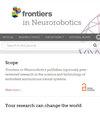从表面肌电图连续估算手指运动学的融合阈值和变压器网络
IF 2.6
4区 计算机科学
Q3 COMPUTER SCIENCE, ARTIFICIAL INTELLIGENCE
引用次数: 0
摘要
解码表面肌电图(sEMG)以识别人类的运动意图,使我们能够在人机交互(HCI)领域实现稳定、自然和一致的控制。在本文中,我们提出了一种新颖的深度学习(DL)模型,命名为融合入门和变压器网络(FIT),通过充分利用入门和变压器网络的能力,有效地对序列数据的局部和全局信息进行建模。在公开的 Ninapro 数据集中,我们选取了 10 名受试者 6 个典型手部抓握动作的表面肌电信号,用于预测手部 10 个最重要关节角度的值。我们通过皮尔逊相关系数 (PCC)、均方根误差 (RMSE) 和 R 平方 (R2) 指标评估了模型的性能,并将其与时序卷积网络 (TCN)、长短期记忆网络 (LSTM) 和变压器双向编码器表示模型 (BERT) 进行了比较。此外,我们还计算了模型的训练时间和推理时间。结果表明,FIT 的性能最好,估计精度高,计算成本低。我们的模型有助于人机交互技术的发展,具有重要的实用价值。本文章由计算机程序翻译,如有差异,请以英文原文为准。
Fusion inception and transformer network for continuous estimation of finger kinematics from surface electromyography
Decoding surface electromyography (sEMG) to recognize human movement intentions enables us to achieve stable, natural and consistent control in the field of human computer interaction (HCI). In this paper, we present a novel deep learning (DL) model, named fusion inception and transformer network (FIT), which effectively models both local and global information on sequence data by fully leveraging the capabilities of Inception and Transformer networks. In the publicly available Ninapro dataset, we selected surface EMG signals from six typical hand grasping maneuvers in 10 subjects for predicting the values of the 10 most important joint angles in the hand. Our model’s performance, assessed through Pearson’s correlation coefficient (PCC), root mean square error (RMSE), and R-squared (R2 ) metrics, was compared with temporal convolutional network (TCN), long short-term memory network (LSTM), and bidirectional encoder representation from transformers model (BERT). Additionally, we also calculate the training time and the inference time of the models. The results show that FIT is the most performant, with excellent estimation accuracy and low computational cost. Our model contributes to the development of HCI technology and has significant practical value.
求助全文
通过发布文献求助,成功后即可免费获取论文全文。
去求助
来源期刊

Frontiers in Neurorobotics
COMPUTER SCIENCE, ARTIFICIAL INTELLIGENCER-ROBOTICS
CiteScore
5.20
自引率
6.50%
发文量
250
审稿时长
14 weeks
期刊介绍:
Frontiers in Neurorobotics publishes rigorously peer-reviewed research in the science and technology of embodied autonomous neural systems. Specialty Chief Editors Alois C. Knoll and Florian Röhrbein at the Technische Universität München are supported by an outstanding Editorial Board of international experts. This multidisciplinary open-access journal is at the forefront of disseminating and communicating scientific knowledge and impactful discoveries to researchers, academics and the public worldwide.
Neural systems include brain-inspired algorithms (e.g. connectionist networks), computational models of biological neural networks (e.g. artificial spiking neural nets, large-scale simulations of neural microcircuits) and actual biological systems (e.g. in vivo and in vitro neural nets). The focus of the journal is the embodiment of such neural systems in artificial software and hardware devices, machines, robots or any other form of physical actuation. This also includes prosthetic devices, brain machine interfaces, wearable systems, micro-machines, furniture, home appliances, as well as systems for managing micro and macro infrastructures. Frontiers in Neurorobotics also aims to publish radically new tools and methods to study plasticity and development of autonomous self-learning systems that are capable of acquiring knowledge in an open-ended manner. Models complemented with experimental studies revealing self-organizing principles of embodied neural systems are welcome. Our journal also publishes on the micro and macro engineering and mechatronics of robotic devices driven by neural systems, as well as studies on the impact that such systems will have on our daily life.
 求助内容:
求助内容: 应助结果提醒方式:
应助结果提醒方式:


